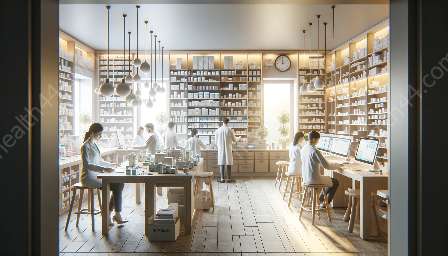Restaurants are increasingly embracing sustainable and eco-friendly design practices to reduce environmental impact and create healthier dining environments. By incorporating energy-efficient layouts, environmentally conscious material choices, and operational strategies, restaurant owners and designers can contribute to a more sustainable future while enhancing the overall dining experience for patrons.
Energy-Efficient Layout
One of the key elements of sustainable restaurant design is the layout of the space. By optimizing the use of natural light, incorporating energy-efficient lighting and HVAC systems, and strategically positioning kitchen equipment, restaurants can significantly reduce their energy consumption. Maximizing natural ventilation and airflow can also contribute to a more comfortable and inviting dining ambiance, reducing the reliance on artificial climate control.
Environmentally Conscious Material Choices
Using eco-friendly and sustainable materials throughout the restaurant design and construction process is essential for reducing the environmental impact. From flooring and furniture to fixtures and finishes, restaurant owners can choose materials that are renewable, recyclable, and non-toxic. This includes utilizing reclaimed wood, bamboo, cork, and other sustainable options that minimize resource depletion and promote responsible sourcing.
Operational Strategies
Implementing sustainable operational practices goes hand in hand with eco-friendly design. Restaurants can reduce waste by implementing composting programs, using biodegradable packaging and utensils, and sourcing locally grown produce to minimize carbon emissions associated with transportation. Additionally, water conservation measures, such as low-flow faucets and water-efficient dishwashing systems, can contribute to a more sustainable operation.
Integrating Sustainability into Restaurant Design and Layout
Integrating sustainability into restaurant design and layout requires a holistic approach that considers not only the physical space but also the operational and cultural aspects of the dining establishment. It involves collaboration between designers, architects, and restaurant owners to identify opportunities for sustainable practices and innovative solutions that align with the brand identity and customer experience.
Incorporating Natural Elements
One way to create an eco-friendly ambiance in restaurant design is by incorporating natural elements such as living green walls, indoor plants, and outdoor dining spaces that connect patrons with nature. These elements not only enhance the aesthetic appeal but also contribute to air purification and a sense of well-being for diners.
Efficient Use of Space
Efficient space planning and utilization are essential for sustainable restaurant design. Designers can optimize the layout to minimize wasted space, reduce energy consumption, and enhance the functionality of the dining area, kitchen, and service areas while accommodating the desired guest capacity.
Lighting and Energy Optimization
Strategic lighting design can significantly reduce energy consumption and create a welcoming ambiance. Utilizing energy-efficient LED fixtures, dimmers, and sensors can help control lighting levels based on natural light availability and occupancy, further enhancing energy savings and creating a comfortable dining atmosphere.
Selection of Sustainable Materials
Choosing sustainable materials for furniture, flooring, and finishes is a critical aspect of eco-friendly restaurant design. By selecting materials with low environmental impact and long-term durability, restaurant owners can minimize the need for frequent replacements and reduce waste generation.
Case Studies in Sustainable Restaurant Design
Several successful restaurants have embraced sustainable and eco-friendly design practices, setting examples for the industry and inspiring others to follow suit. Case studies showcase how these establishments have integrated sustainable design principles into their layout, operations, and overall dining experience, demonstrating the feasibility and benefits of a sustainable approach to restaurant design.
Green Certification and Recognition
Restaurants that prioritize sustainable and eco-friendly practices may pursue green certifications and recognition programs, such as LEED (Leadership in Energy and Environmental Design) certification, to validate their commitment to sustainability and environmental responsibility. These certifications not only demonstrate a restaurant's dedication to eco-friendly design but also provide marketing opportunities and credibility among environmentally conscious consumers.
Conclusion
Sustainable and eco-friendly design practices in restaurants offer numerous benefits, including reduced environmental impact, improved operational efficiency, and enhanced brand reputation. By embracing energy-efficient layouts, environmentally conscious material choices, and sustainable operational strategies, restaurant owners and designers can contribute to a greener future while providing patrons with an eco-friendly and enjoyable dining experience.


